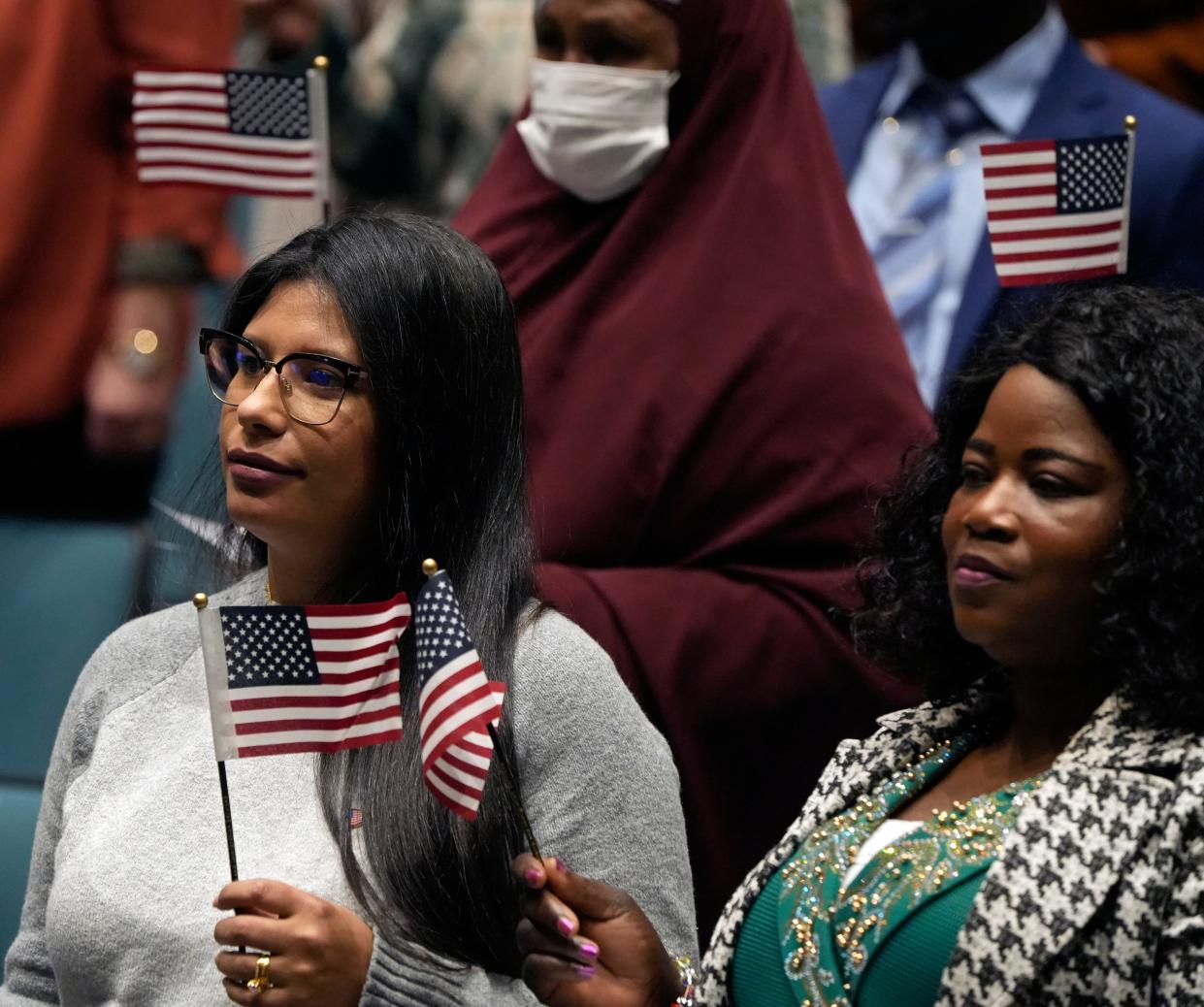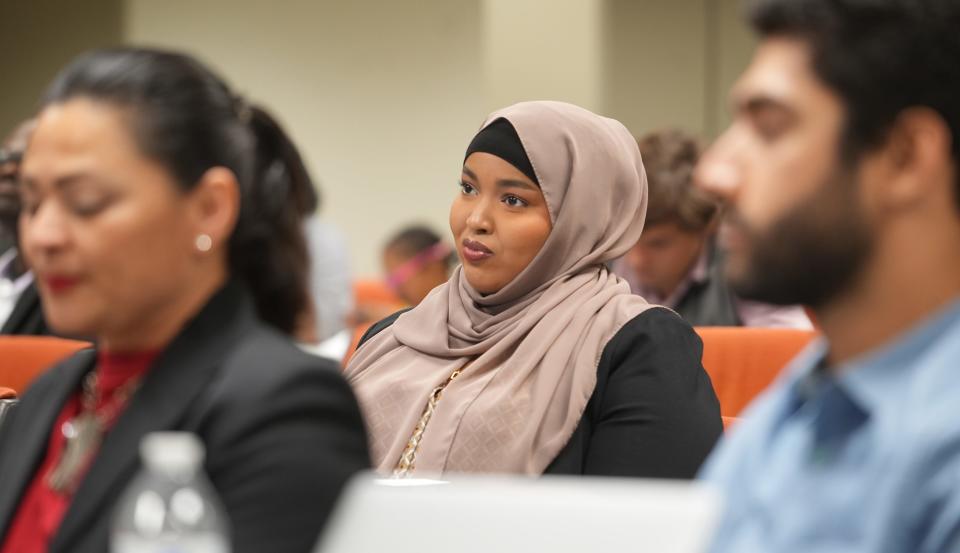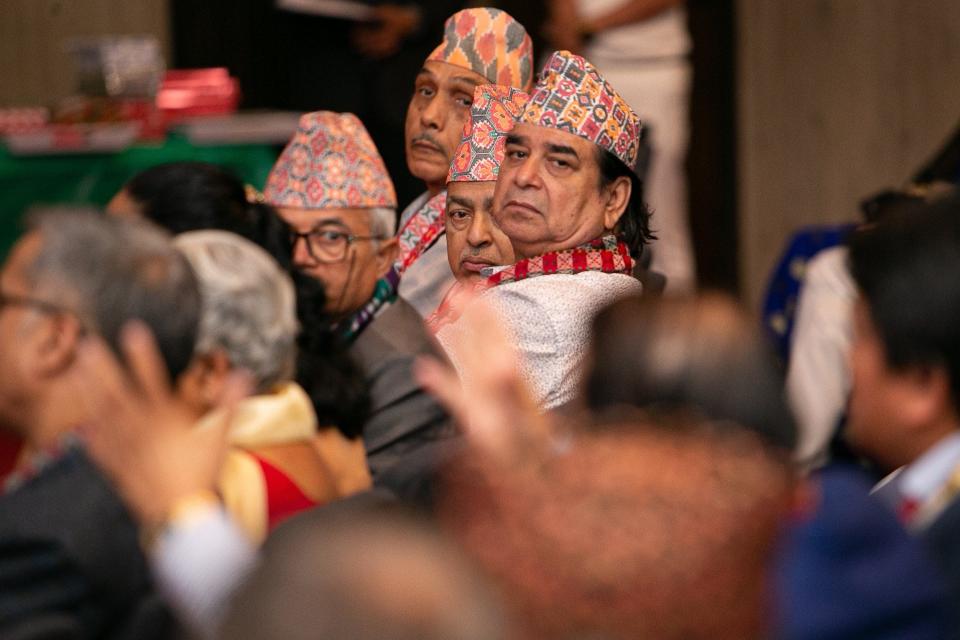How Franklin County became so international

Over the past two decades, Greater Columbus has become a much more international place.
The foreign-born population of Franklin County — which includes naturalized citizens and noncitizens — has grown from around 9% in 2005 to nearly 13% in 2021.
People born in Africa and in Asia are driving the trend.
There were only around 24,000 African immigrants in Franklin County in 2005, but today there are around 61,000. Likewise, the number of Asia-born residents has increased from around 36,000 to roughly 61,000. At the same time, the county’s total population has grown from around 1.1 million to 1.4 million.
“New Americans are attracted to Columbus because it is a friendly community with good education and employment opportunities and relatively affordable housing,” said Abdi Soofe, the city of Columbus’ New American Initiative coordinator. “The city of Columbus has put in place policies and programs that support new arrivals and help them to feel welcome.”
Franklin County in context
Franklin County is far more international than Ohio as a whole, where the foreign-born population is only 7.4%.
The county is slightly less international than the national population, though the makeup is quite different. The area's proportion of Latin America-born people is much smaller than the nation’s, and its proportion of people born in Africa is much higher.
Among African immigrants, the populations of Somalis, Ethiopians and Nigerians have grown the most. Among Asian immigrants, the populations of Bhutanese, Nepalis and Indians have grown significantly.
There are some caveats to the data, which come from the U.S. Census Bureau’s American Community Survey. Unlike the decennial census, which provides more accurate information but does not record respondents’ place of birth, the estimates have a margin of error for each year. (In 2021, the foreign-born population was 168,000, with a margin of error of around 7,800).
Although Franklin County’s Latin America-born population has not increased as much as the number of people from Africa or Asia, the ethnically Latino population — which includes people born in the U.S. — has grown from around 56,000 in 2010 to around 91,000 in 2020, according to the decennial census.
Why Greater Columbus?
Many Africans come as students, immigrants or through the U.S. refugee resettlement program, according to Ibrahima Sow, chairperson of the state’s New African Immigrants Commission.
Africans often land elsewhere in the U.S., such as New York or Atlanta, before relocating to Greater Columbus because of the opportunities available.
“It’s an interesting dynamic of being a mid-size city with enough jobs and with affordable housing, but also you’re able to find enclaves of smaller communities here that kind of helps you increase your sense of belonging,” he said.
The city of Columbus’ protections against discrimination, direct investment in community programs that serve immigrants and refugees, and programs like the New American Leadership Academy have also attracted immigrants, according to Soofe.
The Bhutanese Nepali community, which fled Bhutan to refugee camps in Nepal in the 1990s, began to grow in Columbus in the early 2010s, according to Sudarshan Pyakurel, the director of the nonprofit Bhutanese Community of Central Ohio.
An industrial boom in the early 2010s attracted Bhutanese Nepalis from other states, he said.
“Gov. John Kasich got rid of the collective bargaining law and gave incentives to industries who wanted to move to central Ohio. They needed cheap labor — people who could stand by conveyor belts and do packaging and things like that. … In Columbus, anyone who could stand in line could get a job,” Pyakurel said.
More:How Columbus refugee resettlement agencies have navigated recent rocky years
More:African immigrants commission is only state commission of its kind with no funding. Why?

Economic contributions
Immigrants in the Columbus metro area (which includes eight counties) contributed 11.5% of the area’s gross domestic product — more than their share of the population — and paid $712 million in state and local taxes in 2019, according to a report commissioned by the city of Columbus.
Immigrant workers were vastly over-represented in the STEM (science, technology, engineering, and math) field as well as in transportation, warehousing, manufacturing, healthcare and social services. They also were more likely than average to own their own businesses.
“New American owned and operated businesses … are thriving in areas including Northland and Linden and other diverse neighborhoods that are conducive to creating business opportunities,” Soofe said. “You also see more new Americans playing an important role in government, on area commissions and in civic organizations.”
Growth projections from the Mid-Ohio Regional Planning Commission predict that the region will nearly double in population over the next 30 years.
“New Americans will play a significant role in our continued growth as more people from around the world learn about the opportunities for success that exist in Columbus,” Soofe said.
More:Columbus’ Bhutanese-Nepali community turns up the heat raising peppers

Peter Gill covers immigration and new American communities for The Dispatch in partnership with Report for America. You can support work like his with a tax-deductible donation to Report for America here:bit.ly/3fNsGaZ.
pgill@dispatch.com
This article originally appeared on The Columbus Dispatch: How Africans and Asians made Franklin County international

